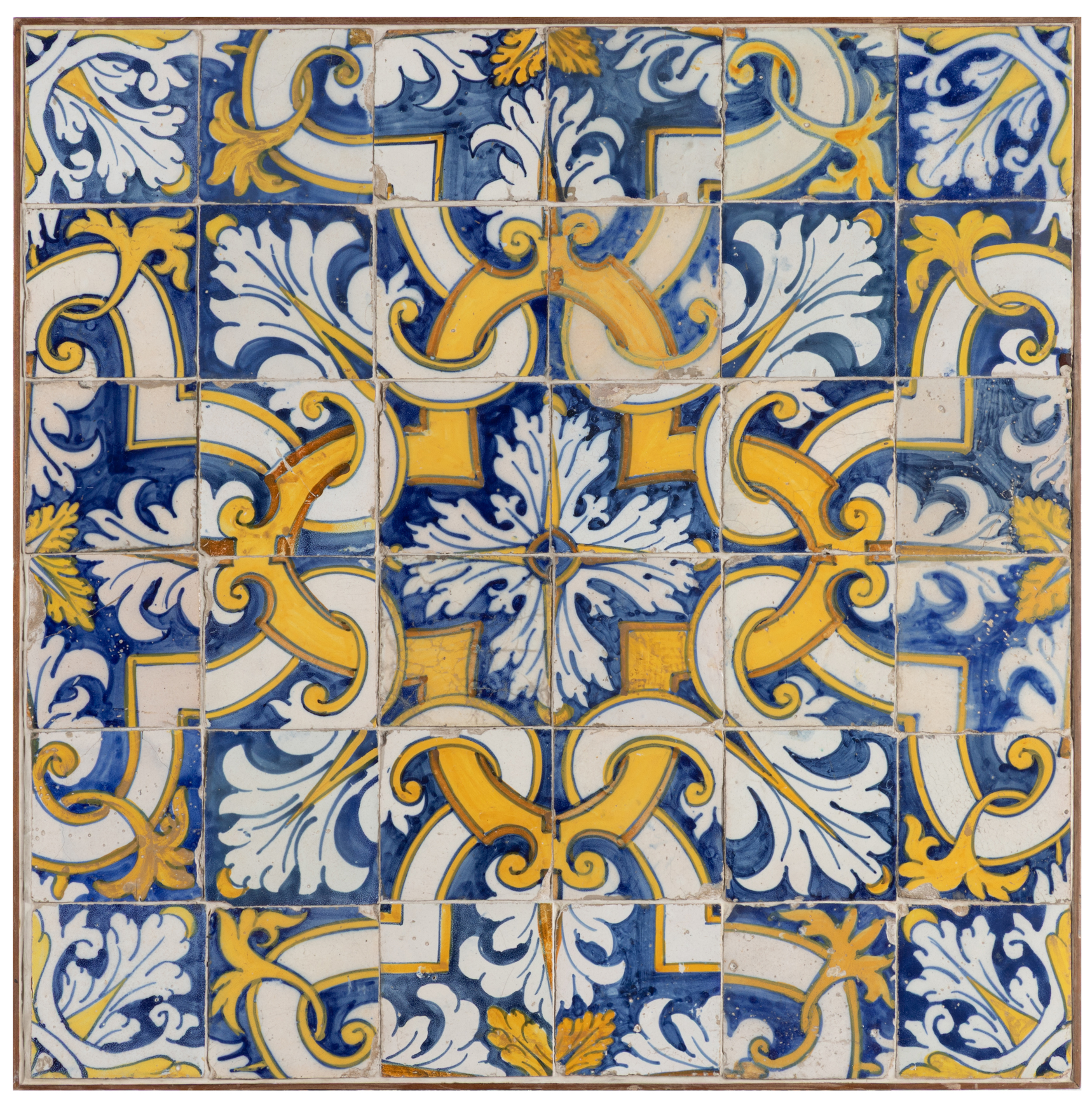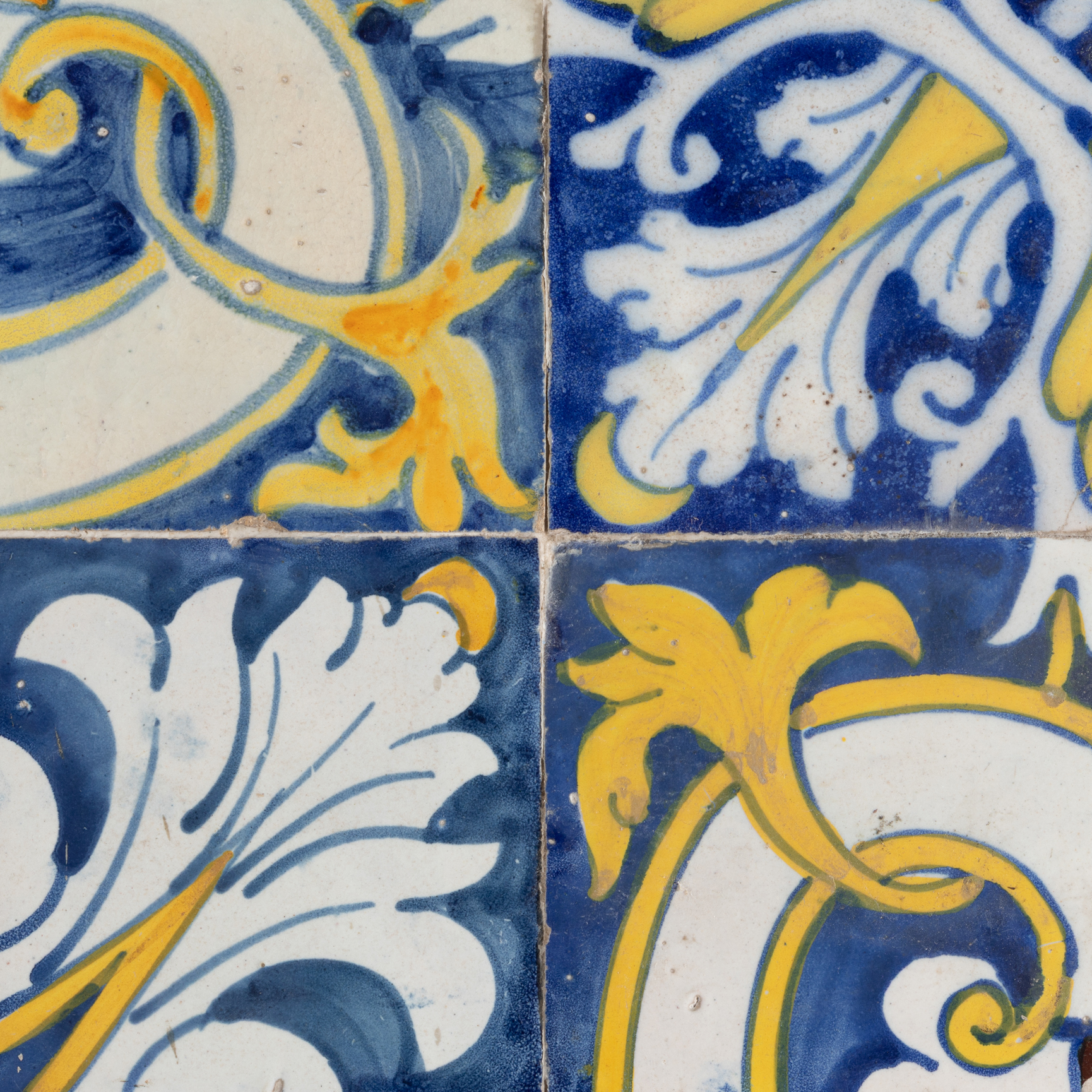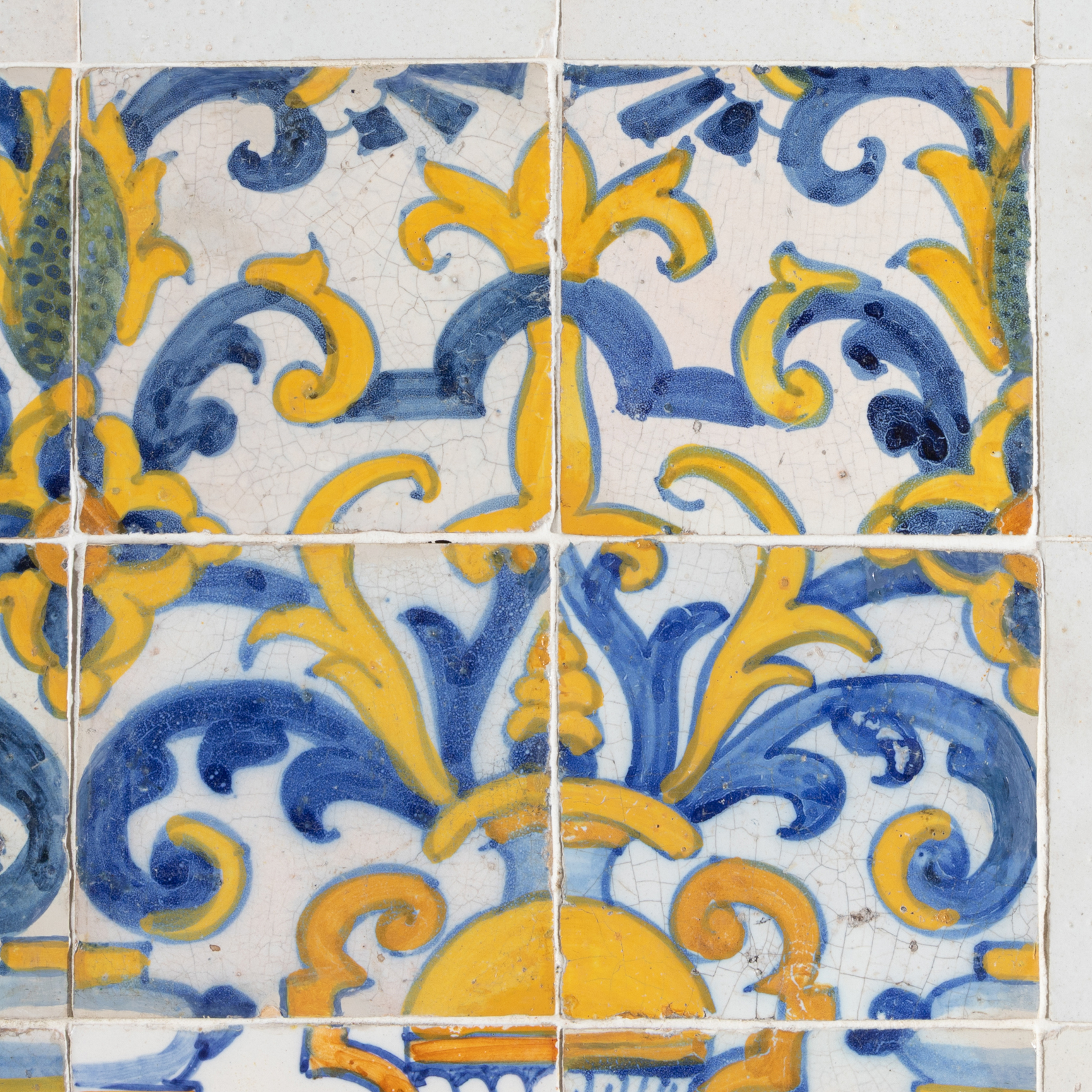
Portuguese azulejo art reached a peak of splendor in the 17th century with the creation of the so-called “tile carpets”—large-scale decorative compositions that mimicked the appearance of tapestries.
The origins of these tile carpets date back to the late 16th century, with the use of framed compositions, monochromatic tiles that defined organized decorative patterns. However, by the 17th century, this model was gradually replaced by more dynamic schemes, known as “composite” patterns, in which the designs expanded freely, forming large continuous panels.
Polychrome Tiles with Vegetal and Floral Motifs
Over time, economic factors also contributed to the abandonment of the framed model. Although monochromatic tiles had lower production costs, their installation required skilled labor, which increased the final expense. In contrast, patterned tiles with repetitive motifs, square and uniform in shape, allowed for quicker and more cost-effective placement.
The transition from framed panels to tile carpets was not abrupt, but rather the result of a process of evolution and adaptation. The compositions began to be defined by a well-structured decorative rhythm of repeating geometric patterns. Polychromatic vegetal and floral decorative elements became a constant feature.


The Great Tile Carpets
Thus were born the great tile carpets: rhythmic and symmetrical pattern compositions that became a true symbol of 17th-century Portuguese azulejo art.
The predominant colors of this period were cobalt blue, antimony yellow, copper green, and manganese. After 1670, a preference for blue and white emerged, strongly inspired by Ming Dynasty Chinese porcelain.
Islamic and Italian Influence
These patterns reflect influences from Islamic art and the Italian Renaissance, resulting in a unique and unmistakable expression of Portuguese decorative heritage.
